Fast Fourier Transform v9.1
Table of Contents
IP Facts
Ch. 1: Overview
Core Overview
Algorithm
Licensing and Ordering
Ch. 2: Product Specification
Resource Utilization
Port Descriptions
Ch. 3: Designing with the Core
Clocking
aclken (Clock Enable)
Resets
aresetn (Synchronous Clear)
Event Signals
event_frame_started
event_tlast_missing
event_tlast_unexpected
event_fft_overflow
event_data_in_channel_halt
event_data_out_channel_halt
event_status_channel_halt
AXI4-Stream Considerations
Basic Handshake
AXI Channel Rules
Configuration Channel
TDATA Fields
TDATA Format
TDATA Example
Data Input Channel
Pinout
TDATA Fields
TDATA Format
TDATA Example
Data Output Channel
Pinout
TDATA Fields
TDATA Format
TDATA Example
TUSER Fields
TUSER Format
TUSER Examples
Status Channel
Pinout
TDATA Fields
TDATA Format
TDATA Example
Theory of Operation
Finite Word Length Considerations
Floating-Point Considerations
Denormalized Numbers
NaNs and ± Infinity
Real-Valued Input Data
Rounding Implementation
Dynamic Range Characteristics
Architecture Options
Bit and Digit Reversal
Pipelined Streaming I/O
Radix-4 Burst I/O
Radix-2 Burst I/O
Radix-2 Lite Burst I/O
Run Time Transform Configuration
Transform Size
Forward/Inverse and Scaling Schedule
Cyclic Prefix Insertion
Transform Status
Overflow
Block Exponent
XK Index
Controlling the FFT Core
Transform Timing
Pipelined Streaming I/O with no Cyclic Prefix Insertion
Pipelined Streaming I/O with Cyclic Prefix Insertion
Burst I/O Architectures
Configuring the FFT
Applying a New Configuration While Idle
Applying a New Configuration While Streaming Frames
How Changing the Configuration Can Change Transform Timing
Ch. 4: Design Flow Steps
Customizing and Generating the Core
Configuration Tab
Implementation Tab
Detailed Implementation Tab
Information Tabs
User Parameters
Output Generation
System Generator for DSP Graphical User Interface
Tab 1: Basic
Tab 2: Advanced
Tab 3: Implementation
Constraining the Core
Required Constraints
Device, Package, and Speed Grade Selections
Clock Frequencies
Clock Management
Clock Placement
Banking
Transceiver Placement
I/O Standard and Placement
Simulation
Synthesis and Implementation
Ch. 5: C Model
Features
Overview
Unpacking and Model Contents
Installation
Software Requirements
FFT C Model Interface
Create a State Structure
Simulate the FFT Core
Destroy the State Structure
C Model Example Code
Compiling with the FFT C Model
Linux
Windows
FFT MATLAB Software MEX Function
Building the MEX Function
Installing and Running the MEX Function
MEX Function Example Code
Modeling Multichannel FFTs
Dependent Libraries
Ch. 6: Test Bench
Demonstration Test Bench
Using the Demonstration Test Bench
Demonstration Test Bench in Detail
Customizing the Demonstration Test Bench
Appx. A: Upgrading
Migrating to the Vivado Design Suite
Upgrading in the Vivado Design Suite
Parameter Changes
Port Changes
Functionality Changes
Latency Changes
Numerical Behavior Changes
Appx. B: Debugging
Finding Help on Xilinx.com
Documentation
Answer Records
Technical Support
Debug Tools
Vivado Design Suite Debug Feature
Reference Boards
C Model Reference
Simulation Debug
AXI4-Stream Interface Debug
Appx. C: Additional Resources and Legal Notices
Xilinx Resources
Documentation Navigator and Design Hubs
References
Revision History
Please Read: Important Legal Notices

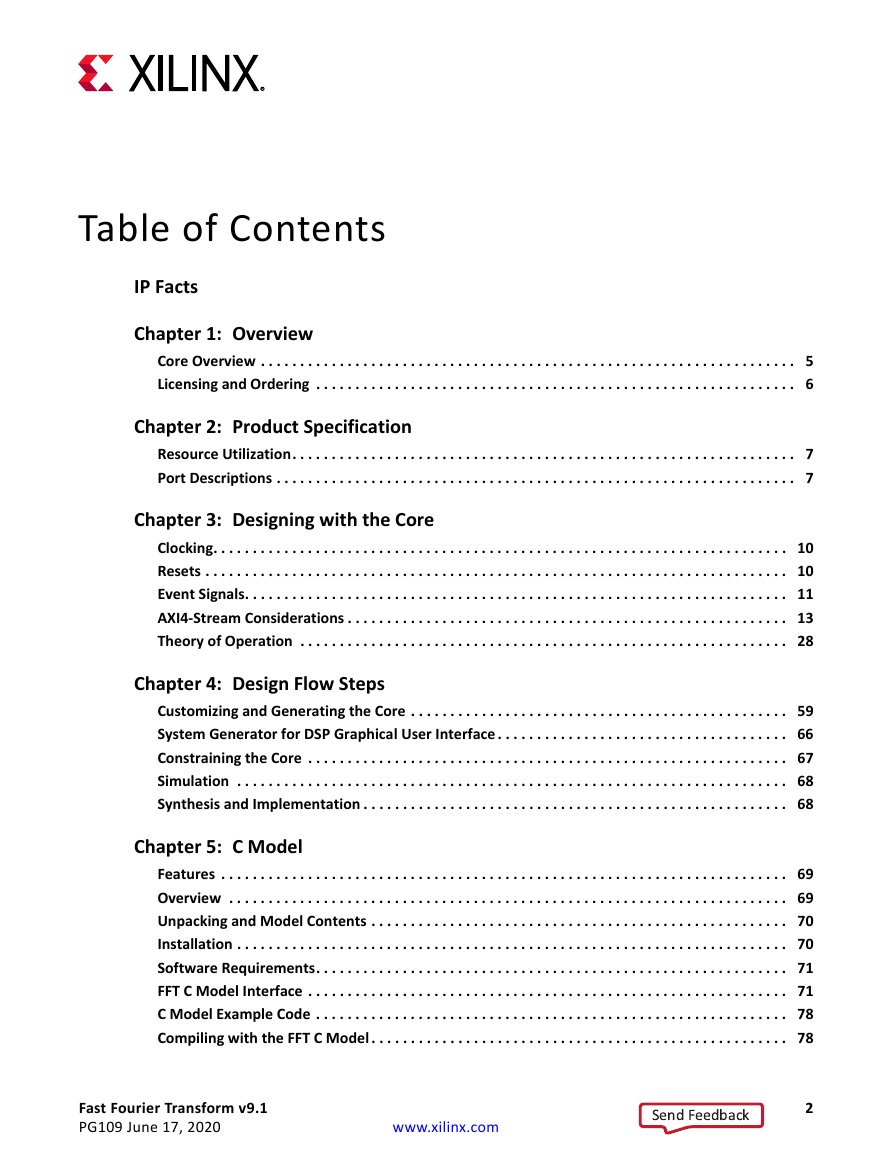
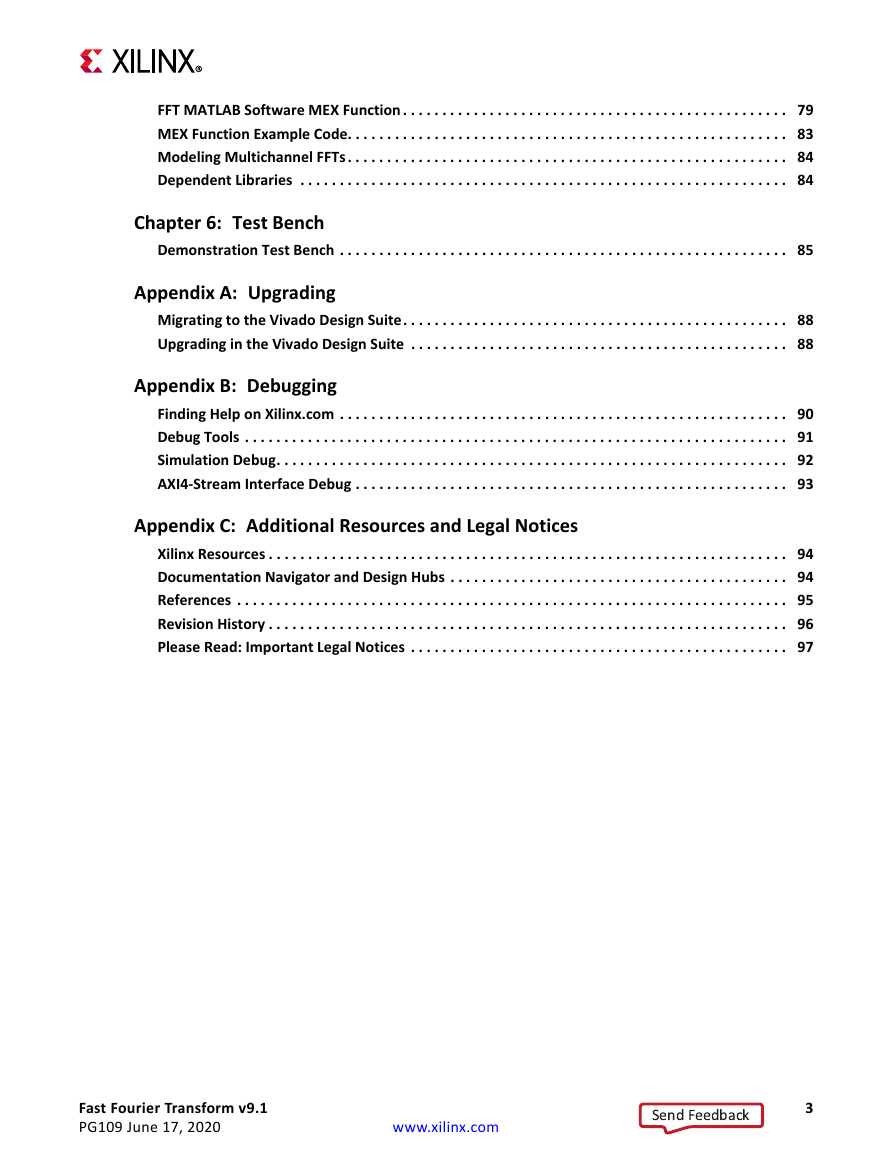
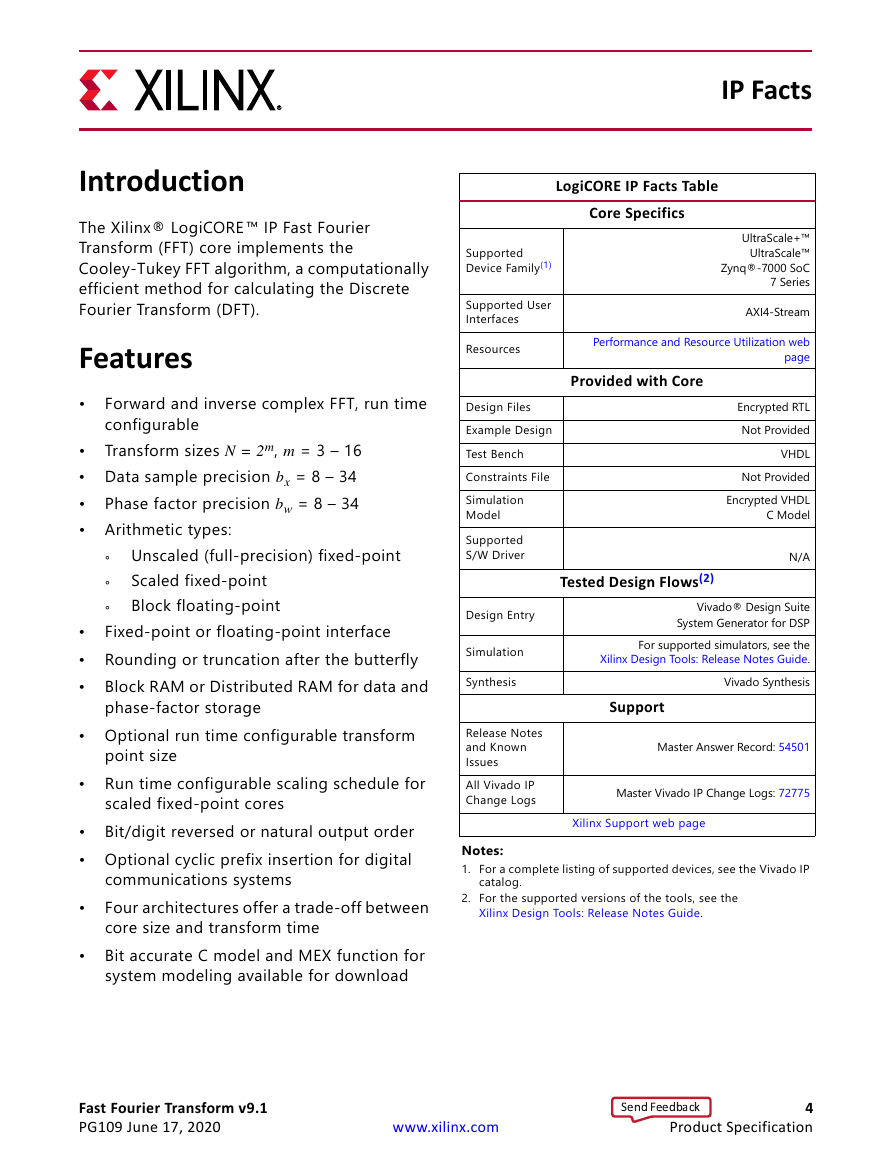
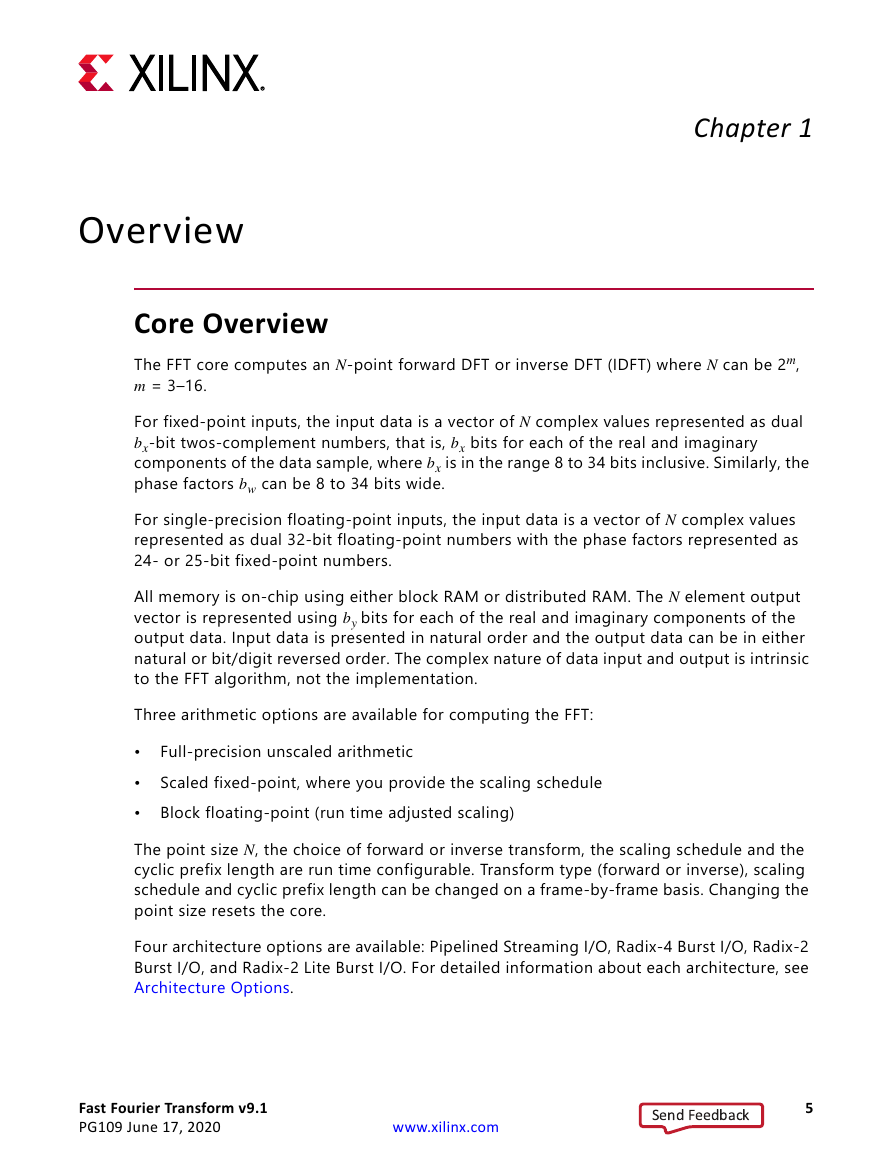
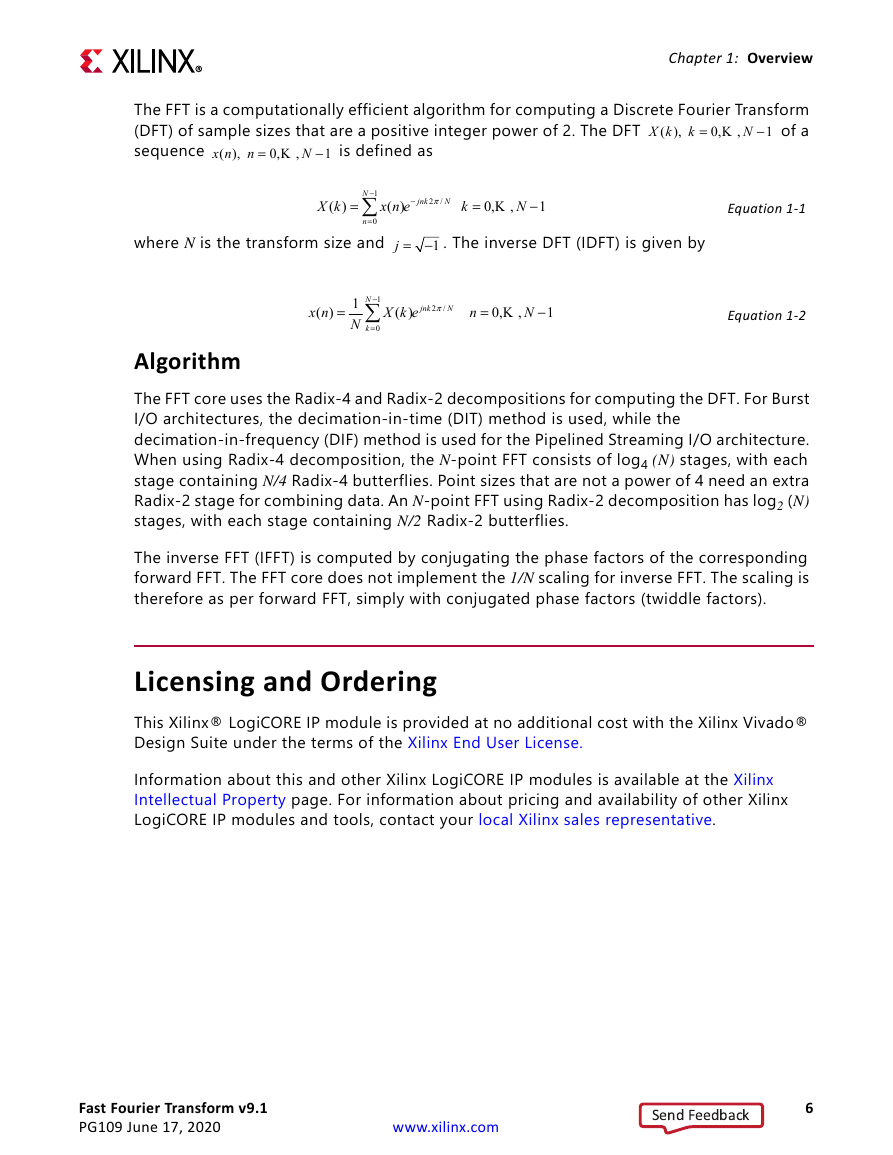
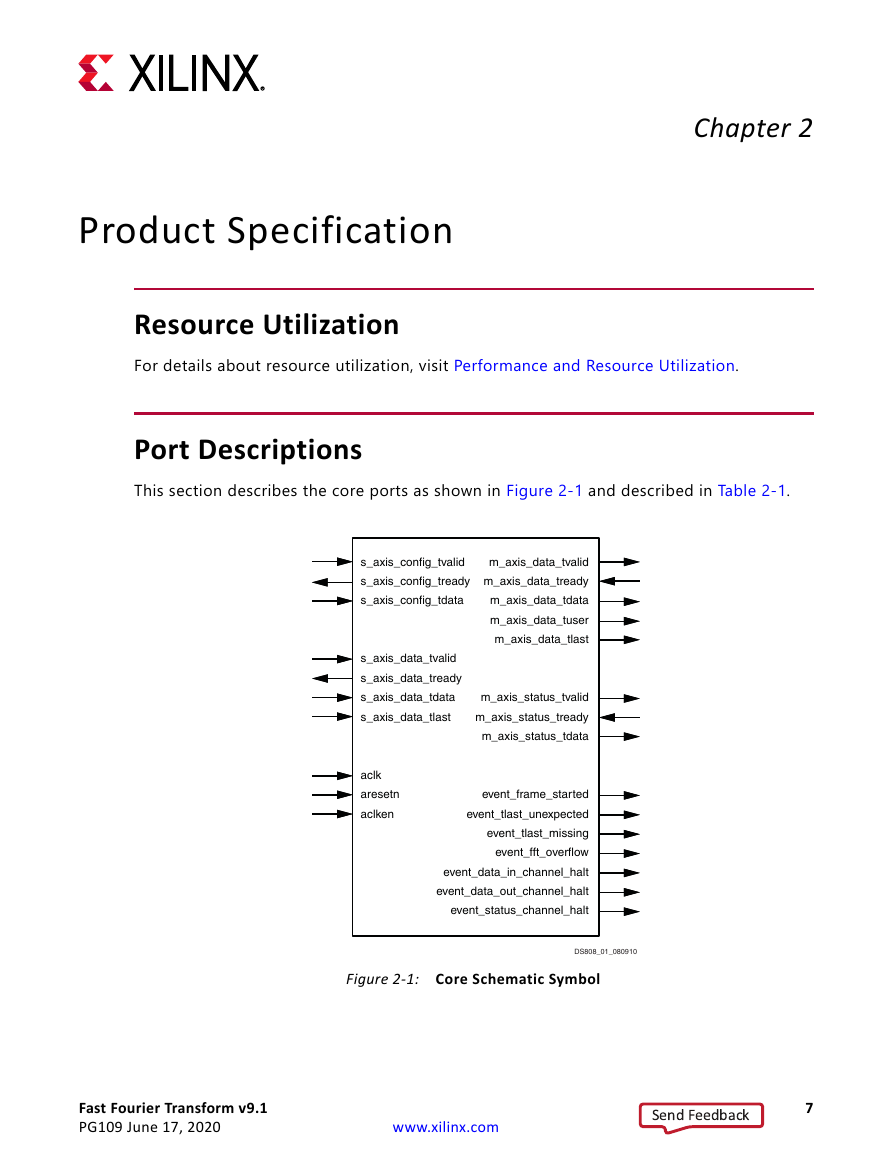
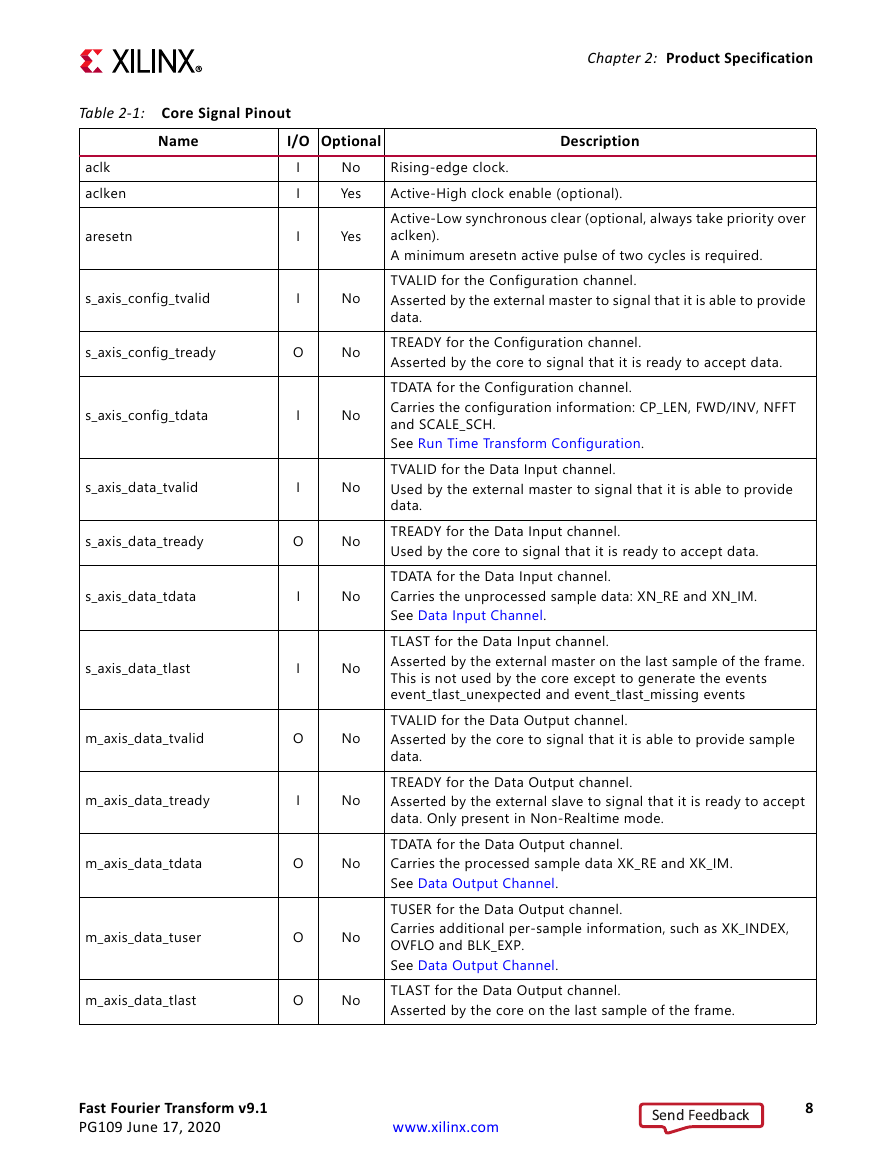








 2023年江西萍乡中考道德与法治真题及答案.doc
2023年江西萍乡中考道德与法治真题及答案.doc 2012年重庆南川中考生物真题及答案.doc
2012年重庆南川中考生物真题及答案.doc 2013年江西师范大学地理学综合及文艺理论基础考研真题.doc
2013年江西师范大学地理学综合及文艺理论基础考研真题.doc 2020年四川甘孜小升初语文真题及答案I卷.doc
2020年四川甘孜小升初语文真题及答案I卷.doc 2020年注册岩土工程师专业基础考试真题及答案.doc
2020年注册岩土工程师专业基础考试真题及答案.doc 2023-2024学年福建省厦门市九年级上学期数学月考试题及答案.doc
2023-2024学年福建省厦门市九年级上学期数学月考试题及答案.doc 2021-2022学年辽宁省沈阳市大东区九年级上学期语文期末试题及答案.doc
2021-2022学年辽宁省沈阳市大东区九年级上学期语文期末试题及答案.doc 2022-2023学年北京东城区初三第一学期物理期末试卷及答案.doc
2022-2023学年北京东城区初三第一学期物理期末试卷及答案.doc 2018上半年江西教师资格初中地理学科知识与教学能力真题及答案.doc
2018上半年江西教师资格初中地理学科知识与教学能力真题及答案.doc 2012年河北国家公务员申论考试真题及答案-省级.doc
2012年河北国家公务员申论考试真题及答案-省级.doc 2020-2021学年江苏省扬州市江都区邵樊片九年级上学期数学第一次质量检测试题及答案.doc
2020-2021学年江苏省扬州市江都区邵樊片九年级上学期数学第一次质量检测试题及答案.doc 2022下半年黑龙江教师资格证中学综合素质真题及答案.doc
2022下半年黑龙江教师资格证中学综合素质真题及答案.doc